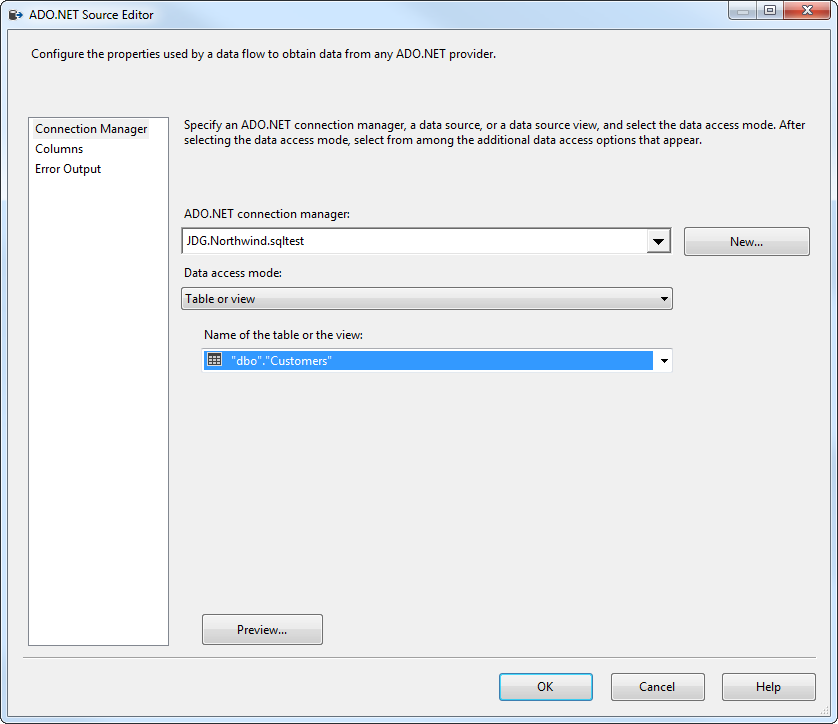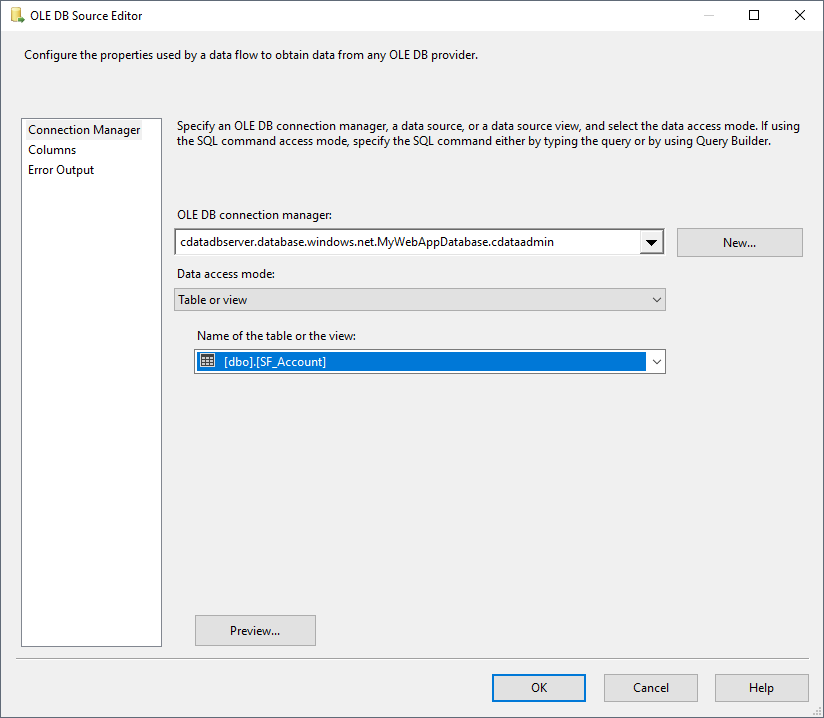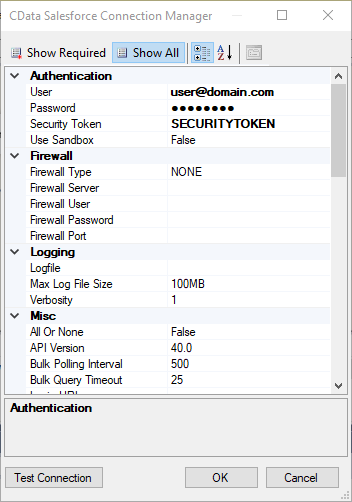Discover how a bimodal integration strategy can address the major data management challenges facing your organization today.
Get the Report →Export Data from SQL Server to Active Directory through SSIS
Easily push SQL Server data to Active Directory using the CData SSIS Tasks for Active Directory.

SQL Server databases are commonly used to store enterprise records. It is often necessary to move this data to other locations. The CData SSIS Task for Active Directory allows you to easily transfer Active Directory data. In this article you will export data from SQL Server to Active Directory.
Add Source and Destination Components
To get started, add a new ADO.NET Source control and a new Active Directory Destination control to the data flow task.

Configure the ADO.NET Source
Follow the steps below to specify properties required to connect to the SQL Server instance.
- Open the ADO.NET Source and add a new connection. Enter your server and database information here.
- In the Data access mode menu, select "Table or view" and select the table or view to export into Active Directory.
- Close the ADO NET Source wizard and connect it to the destination component.

Create a New Connection Manager for Active Directory
Follow the steps below to set required connection properties in the Connection Manager.
- Create a new connection manager: In the Connection Manager window, right-click and then click New Connection. The Add SSIS Connection Manager dialog is displayed.
- Select CData ActiveDirectory Connection Manager in the menu.
-
Configure the connection properties.
To establish a connection, set the following properties:
- Valid User and Password credentials (e.g., Domain\BobF or cn=Bob F,ou=Employees,dc=Domain).
- Server information, including the IP or host name of the Server, as well as the Port.
BaseDN: This will limit the scope of LDAP searches to the height of the distinguished name provided.
Note: Specifying a narrow BaseDN may greatly increase performance; for example, cn=users,dc=domain will only return results contained within cn=users and its children.
Configure the Active Directory Destination
In the destination component Connection Manager, define mappings from the SQL Server source table into the Active Directory destination table and the action you want to perform on the Active Directory data. In this article, you will insert User entities to Active Directory.
- Double-click the Active Directory destination to open the destination component editor.
- In the Connection Managers tab, select the connection manager previously created.
-
In the Use a Table, menu, select User.
In the Action menu, select Insert.
![The destination table and action to be performed.]()
-
On the Column Mappings tab, configure the mappings from the input columns to the destination columns.
![The mappings from the SQL Server source to the SSIS destination component.]()
Run the Project
You can now run the project. After the SSIS Task has finished executing, data from your SQL table will be exported to the chosen table.









